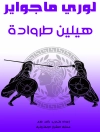This volume is the first comprehensive study of the material imprint of slavery in early medieval Europe. While written sources attest to the ubiquity of slavery and slave trade in early medieval British Isles, Scandinavia and Slavic lands, it is still difficult to find material traces of this reality, other than the hundreds of thousands of Islamic coins paid in exchange for the northern European slaves. This volume offers the first structured reflection on how to bridge this gap. It reviews the types of material evidence that can be associated with the institution of slavery and the slave trade in early medieval northern Europe, from individual objects (such as e.g. shackles) to more comprehensive landscape approaches.
The book is divided into four sections. The first presents the analytical tools developed in Africa and prehistoric Europe to identify and describe social phenomena associated with slavery and the slave trade. The following three section reviewthe three main cultural zones of early medieval northern Europe: the British Isles, Scandinavia, and Slavic central Europe. The contributions offer methodological reflections on the concept of the archaeology of slavery. They emphasize that the material record, by its nature, admits multiple interpretations. More broadly, this book comes at a time when the history of slavery is being integrated into academic syllabi in most western countries. The collection of studies contributes to a more nuanced perspective on this important and controversial topic. This volume appeals to multiple audiences interested in comparative and global studies of slavery, and will constitute the point of reference for future debates.
Mục lục
Introduction: An ‘invisible commodity’?; Marek Jankowiak and Felix Biermann.- Part One: Comparative perspectives.- Chapter 1. T
he arrogation of slavery: Prehistory, archaeology, and pre-theoretical commitments concerning people as property; Timothy Taylor.- Chapter 2.
Recent approaches to the archaeological investigation of slavery in Africa; Paul Lane.- Part Two: The British Isles.- Chapter 3.
To tread the paths, and traverse the moors: Investigating slavery in early medieval western Britain; Katie Hemer.- Chapter
4. T
he archaeology of slave trading in Viking Age Britain and Ireland: A methodological approach; Janel Fontaine.- Part Three: Scandinavia.- Chapter 5.
The norm and the subaltern. Identifying slaves in an early medieval Scandinavian society; Anna Kjellström.- Chapter 6.
Legacy of the disowned. Finding ambátts
in high medieval Scania and Östergötland through ceramic production; Mats Roslund.- Chapter 7.
Bonded people. Making thralls visible in Viking-Age and early medieval Sweden; Torun Zachrisson.- Part Four: Central Europe.- Chapter 8. T
he slave trade in Great Moravia: reality or fiction?; Jiří Macháček.- Chapter 9.
Slavery and slave trade in early medieval Czech duchy: Archaeology of slavery or slavery of archaeology?; Ivo Štefan.- Chapter 10.
Archaeological evidence for slavery among the early medieval north-western Slavs; Felix Biermann.- Chapter 11.
Tracing the Saqaliba: slave trade and the archaeology of tenth-century northern Europe; Marek Jankowiak.- Index.
Giới thiệu về tác giả
Felix Biermann is an Associate Professor of early medieval archaeology at the University of Szczecin, Poland. His research interests include the archaeology and history of the Baltic Sea area, Middle and Eastern Europe from c. 500-1500, with special emphasis on social and economic structures, interregional contacts and the archaeology of fortified settlements.
Marek Jankowiak is an Associate Professor of Byzantine history at the University of Oxford. In addition to his interests in Byzantine social and economic history, he works on the slave trade system that connected the Islamic world and northern Europe in the ninth and tenth centuries. He was the co-investigator of the AHRC project “Dirhams for Slaves” and co-edited “Viking-Age Trade: Silver, Slaves and Gotland” (2020).












